By William Stroock
With its pro-Western ally in southern Angola facing destruction by an all-out communist offensive in 1987, Apartheid South African President P.W. Botha faced a hard choice. He could let the Angolan government army overrun guerrilla leader Jonas Savimbi’s National Union for the Total Independence of Angola (UNITA) once and for all, or he could commit ground forces to help the guerrilla faction survive.
To South African Army Chief General Johannes Geldenhuys and his deputies, there was only one right choice. Geldenhuys argued that allowing UNITA to be overrun would undo everything the South African Defense Force had been fighting for since it was drawn into Angola’s civil war in 1975, put a powerful international communist force on the border with South West Africa, and, in his words, “might create a new infiltration route to South African soil.”
With these words in mind, Botha and the cabinet agreed to send a limited ground force to Angola in support of UNITA. During the communist offensives of 1985 and 1986, South African help for UNITA came in the form of air and artillery support. This time, things would be different. Reluctantly, Botha told Geldenhuys to draw up plans that would entail committing elite South African forces to the bloody, longstanding conflict in neighboring Angola knowing full well that doing so would be unpopular with voters at home and cause an international uproar abroad.
The Cuito Cuanavale/Lomba River campaign began in 1987 with a communist push into southeastern Angola along the Lomba River and ended with a South African attempt to destroy the communist base of operations in the small town of Cuito Cuanavale. It was an interesting battle pitting Angola’s Soviet-style army against the light infantry and mechanized forces of South Africa and her allies. The outcome is still in dispute, with both sides claiming victory.
South West Africa had been a colony of South Africa since the end of World War I. Beginning in the 1960s, the South Western Africa People’s Organization (SWAPO) had waged an insurgency against South African rule. When the Portuguese pulled out of neighboring Angola in 1974, that nation became a safe haven for SWAPO, the African National Congress (ANC), and other groups opposed to South Africa’s Apartheid regime.
As a result, South Africa had been conducting military operations inside Angola for more than a decade. In 1975, South African flying columns had cut a wide swath of destruction across the countryside, and South African commandos in 1978 had conducted a dramatically successful heliborne attack on the SWAPO base at Cassinga, killing hundreds of fighters and causing an international outcry.
Raging alongside the South African/SWAPO border war was the Angolan Civil War. That war pitted the communist Popular Movement for the Liberation of Angola (MPLA) against UNITA. After losing the Angolan civil war of 1975-1976, UNITA took refuge in southeastern Angola. The conflict became a major front in the Cold War with Soviet equipment and Cuban troops flooding into the country to battle UNITA which, because it was viewed as a free alternative to the MPLA, received massive help from South Africa and the United States.
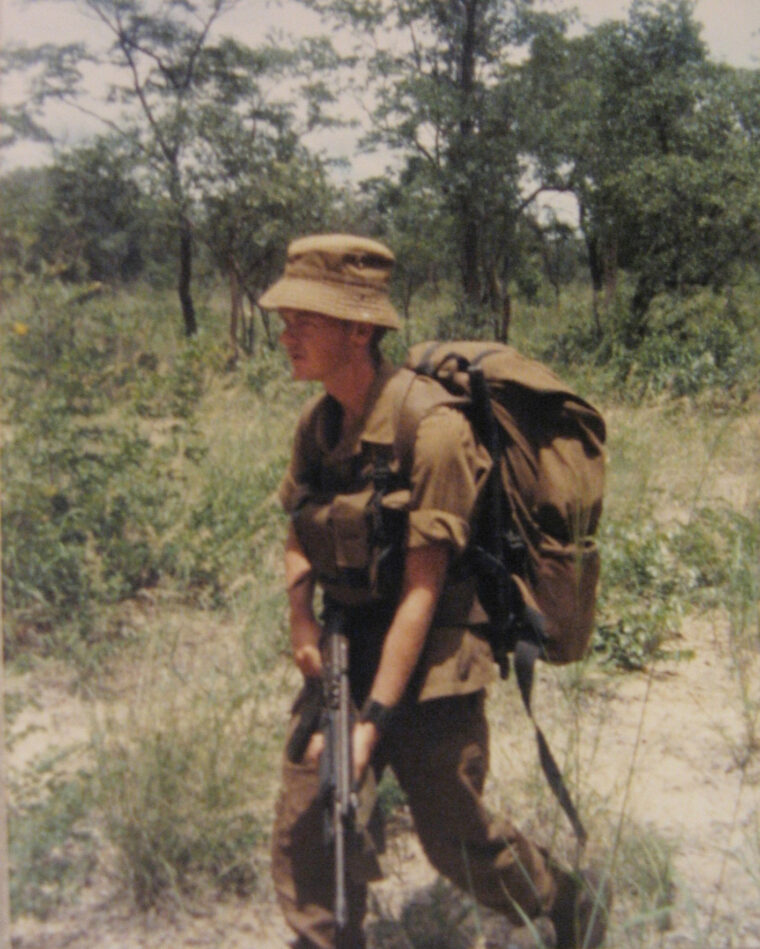
During a decade of war, Savimbi, UNITA’s leader, had built a capable military organization divided into brigades, battalions, and companies. About 15 of UNITA’s battalions, each of 500 to 600 men, were regular infantry. UNITA also fielded a guerrilla force of more than 25,000 men. Several commando units of various specialties also were involved.
UNITA had a sophisticated military organization with a formal command structure, barracks, hospitals, and boot camp. Each soldier was outfitted with boots, military uniform, and modern equipment. In all, UNITA could field about 65,000 men.
UNITA relied heavily on the South African Defense Force (SADF). SADF was undoubtedly the best military force on the African continent. South African units had fought with the British in World War II. The men who trained the SADF in the 1960s and 1970s were professional soldiers and veterans of that conflict. The South African Defense Force of 77,000 men was organized into two standing divisions, two artillery regiments, and two independent brigades.
SADF troops were divided into two groups: the professional Permanent Force and the Citizen Force of conscripts, who served a few years in the army and later in the reserves. South African doctrine emphasized patrol, reconnaissance, and maneuver. Because the white population of South Africa was so small compared to the population as a whole, the government was particularly sensitive to casualties and sought to avoid them. Citizen Force soldiers typically served one 90-day call-up per year. Service in the Angolan or Bush War was a common experience for white South African men of that era.
UNITA and the SADF were not simply fighting Angolan communists but a massive international communist presence as well. The Angolan government’s army, the Forças Armadas Populares de Libertação de Angola (FAPLA) could field 20 brigades totaling perhaps 20,000 men. These were supplemented by a contingent of Cuban ground troops and advisers totaling 31,000 men and upped to 40,000 by the end of 1987. There also were 2,000 East German and 1,000 Soviet advisers. FAPLA could deploy 500 tanks, mostly T-54s and T-55s, with 150 T-34s, and had a modern air force of 30 MiG-23s, 50 MiG-21s, 16 MiG-17s, and 8 Su-22s. It also possessed dozens of Russian- and French-made helicopter gunships. In December 1985, the entire communist establishment was placed under the command of Soviet General Konstantin Shagnovitch, a chemical warfare expert and veteran of Afghanistan.
For four years, international mediators led by American Ambassador Chester Crocker had attempted to bring a peaceful end to the struggle for South West Africa. The South African government, led by Botha, simply refused to leave South West Africa unless the Cubans agreed to leave Angola. This point, or “linkage” as it was called, was not acceptable to Cuban dictator Fidel Castro, who desperately wanted a clear-cut victory to justify his considerable manpower and material investment in Africa.
Castro resolved in 1985 to force an end to the conflict through military means. The Angolan intervention was an important part of Castro’s international effort, which saw Cuban advisers in many global hot spots. Cuban forces in Angola were led by General Arnaldo Ochoa Sánchez, a veteran revolutionary. He had fought at the Bay of Pigs in invasion, had trained communist fighters during the Congo Crisis of the 1960s, led Cuban forces in Ethiopia, and trained Sandinista forces in communist Nicaragua. He was the ideal man for Castro’s project in Angola.
At Castro’s behest, in September 1985 FAPLA sent 11 brigades against UNITA. South African intelligence believed the war to be lost. However, the chief of SADF, General Constand Viljoen, argued that with minimal South African involvement, the communist offensive could be stopped. Botha and the cabinet agreed and committed the South African Air Force (SAAF) to the battle.
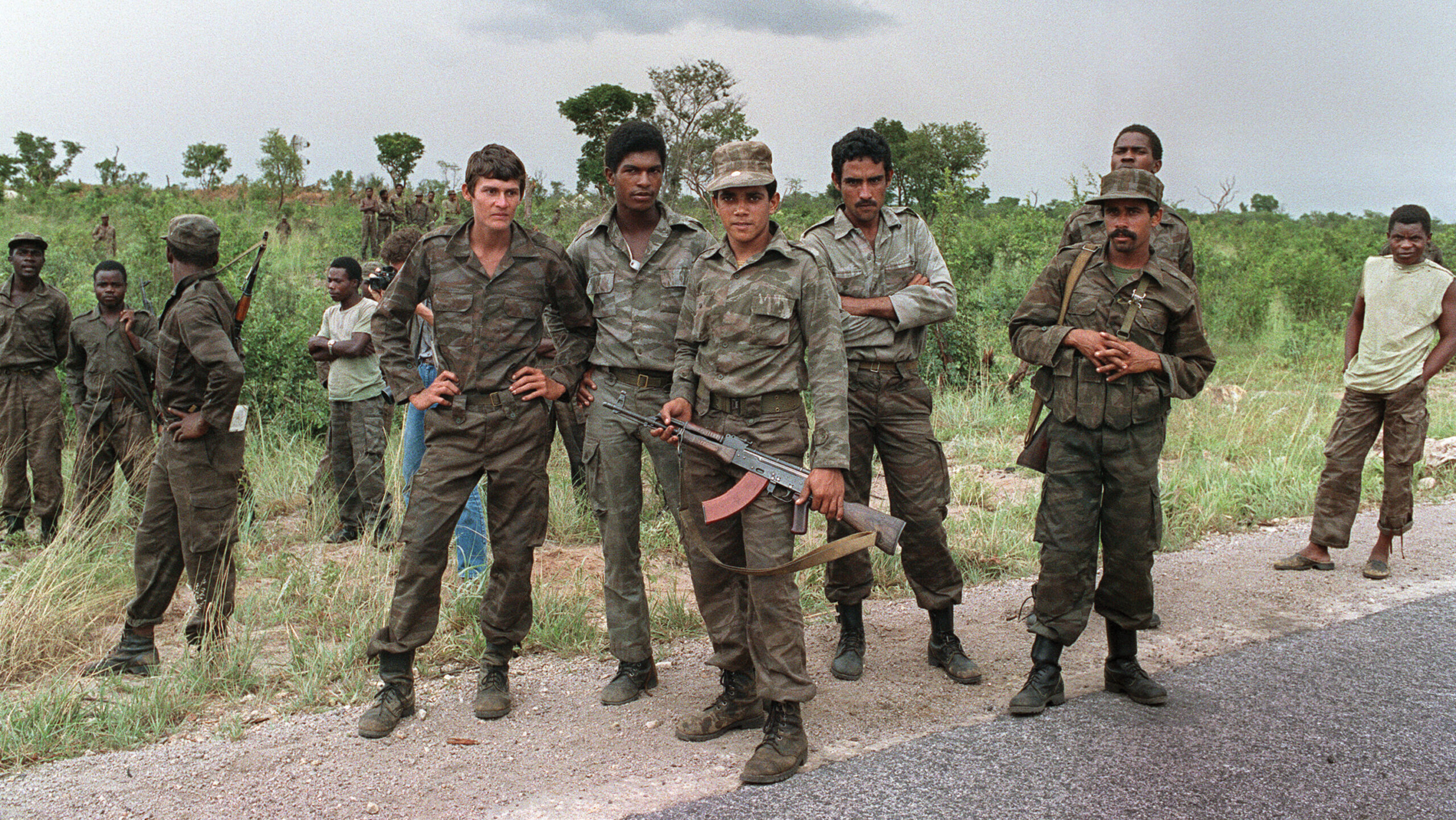
Operation Wallpaper, as it was called, saw wave after wave of South African fighter aircraft pound the FAPLA attack from the air. SAAF aircraft also airlifted UNITA troops to the front. In the heavy fighting that followed, more than 2,500 UNITA troops were killed, but the FAPLA offensive had been stopped cold. General Shagnovitch launched another offensive in 1986, but this was put off by UNITA and SAAF spoiling attacks. Despite the setbacks of 1985 and 1986, Castro greatly pressured Shagnovitch to attack again in 1987.
Shagnovitch conceived Operation Saluting October. The offensive called for a two-pronged armored assault into southeastern Angola. The goal was not a simple battlefield victory but the complete destruction of UNITA. Saluting October was based out of Cuito Cuanavale, a small town on the Cuito River. The northern prong was a diversion meant mostly to tie up UNITA forces and protect the flank. The southern prong consisted of six armored brigades and would strike out from Cuito Cuanavale along the main road, over the Lomba River, and attack UNITA positions at Mavinga, and beyond that their capital at Jomba. Taking Jomba would have the physical effect of denying UNITA its base of operations and the moral effect of humiliating Jonas Savimbi. UNITA would be crushed and South Africa put at a severe negotiating disadvantage.
The South African code name for the commitment of limited ground forces to Angola was Operation Modular. While South African forces were to seek out and engage FAPLA, their written operational orders contained this directive: “the safety of [Republic of South Africa] personnel is a higher priority than the success in operations.”
For Operation Modular Geldenhuys gathered an ad-hoc force at first consisting of two companies of the elite 32 “Buffalo” Battalion, one battery of 81mm mortars, and one battery of multiple rocket launchers. The formation was called 20 Brigade after the military district in which it would be fighting. Throughout the battle 20 Brigade would be reinforced, first with 101 Battalion and 61 Mechanized Battalion and during the later stages of the battle by a squadron of 14 Oliphant tanks. The brigade also contained the ad-hoc 20 Artillery Regiment with two G-5 batteries plus an extra troop, a multiple launch rocket system (MLRS) battery and an extra troop, and a 120mm mortar battery.
Twenty Brigade was at first commanded by Colonel Jock Harris, but as Modular began he was replaced by Colonel Deon Ferreira. Ferreira had more than a decade of experience fighting in Angola. He had taken command of 32 Battalion in 1979 and shown himself to be a hands-on commander. He accompanied units in the field and pioneered the way 32 Battalion fought. He developed the tactic of “butterfly” operations, whereby three infantry companies would establish a temporary base deep in enemy territory. Supported by a squadron of Alouette helicopters, two companies would conduct search and destroy operations while a third would defend the base. Using butterfly tactics, 32 Battalion cut a wide swath of destruction in Angola, doing untold damage to SWAPO and FAPLA in numerous operations. Ferreira became a legend in the SADF and made 32 Battalion famous in the global special forces community.
Thirty-Two Battalion was the brainchild of another South African Special Forces legend, Colonel Jan Breytenbach. Breytenbach had commanded the above mentioned 1975 raid, Operation Savannah. Later he convinced high command to take what remained of his force and form it into a permanent unit. Under his direction 32 Battalion was based in South West Africa and composed of white South African and black South West African soldiers. The battalion comprised a headquarters company, a recon and heavy weapons section, and seven infantry companies. Called “Os Terriveis” in Portuguese, “The Terrible Ones,” 32 Battalion played a key role in the Battle of Cuito Cuanavale.
Another key player was South Africa’s formidable artillery piece, the G-5. The G-5 is a 155mm towed artillery piece developed by South Africa’s indigenous arms manufacturer Armoscor, which also produced a self-propelled version called the G-6. These were just a few of the deadly artillery pieces used to devastating effect by the South Africans at Cuito Cuanavale. Another was the FV2 Bateleur multiple rocket launcher, which the South Africans developed after encountering the Russian 122mm rocket launcher, the infamous “Stalin Organ.” The Bateleur could fire a barrage of 40 127mm rockets, each containing more than 6,000 steel balls. It was mounted on a truck and required a crew of five. The South Africans also employed to great effect 81mm and 120mm mortars.
In July 1987, Shagnovitch began Operation Saluting October with four brigades moving southeast. These were divided into two groups: in the south, 2nd Tactical group comprised 47 and 59 Brigades, and in the north 1st Tactical group comprised 21 and 16 Brigades. As communist forces advanced, they encountered increasingly stiff resistance.
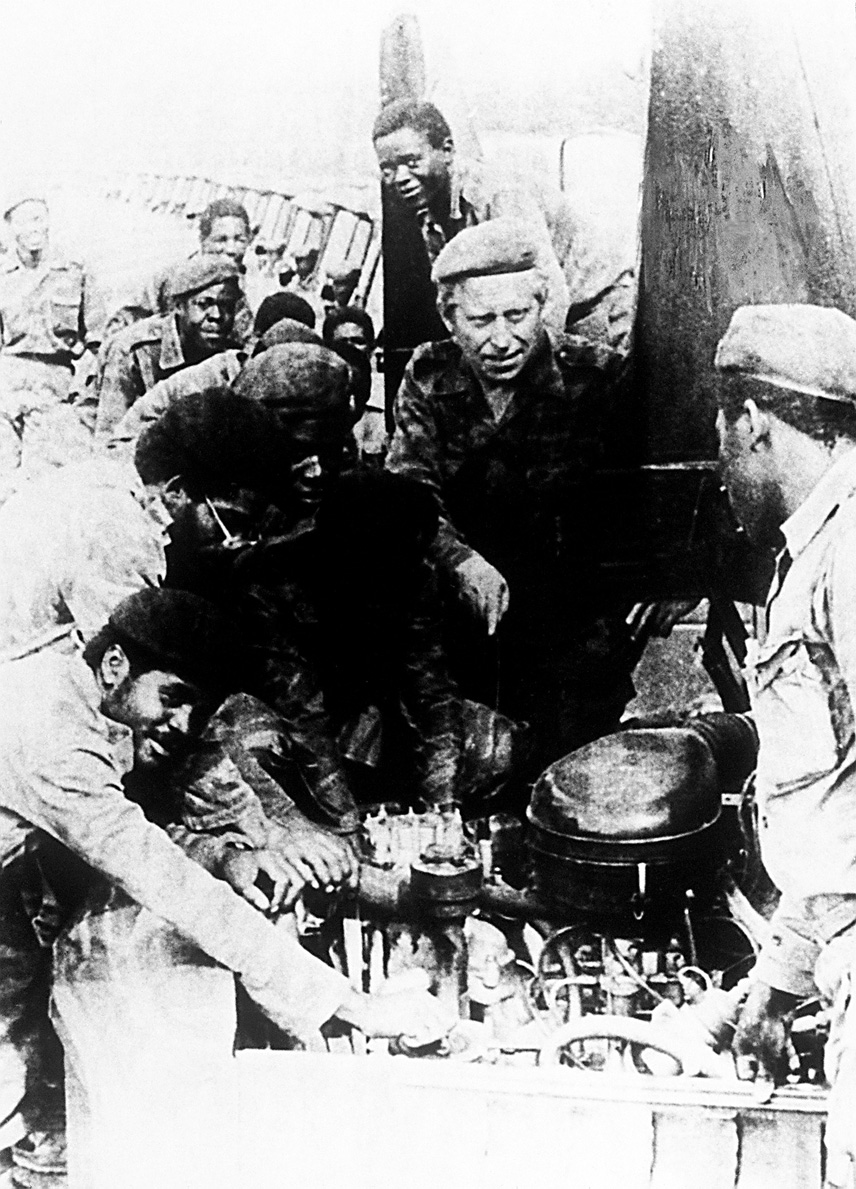
UNITA troops did not mount a static defense but instead relied on mobile, flexible forces to spring ambushes on the lumbering columns. In one case, UNITA ambushed a FAPLA column of fuel trucks, stopping it with land mines and then setting upon the trucks with RPGs. While these ambushes could slow the FAPLA advance, they could not halt it. One Soviet adviser said that despite the harassment, this stage of the advance was conducted “more or less successfully, and UNITA suffered defeat after defeat.”
UNITA fought on its own until August, when the South African Air Force came into play. South African F-1 Mirage aircraft bombed and strafed FAPLA columns, sometimes three times a day. The FAPLA advance was also hindered by South African commandos, who in early September destroyed the main FAPLA bridge across the Cuito River. As a result, FAPLA had to ferry supplies across to the east bank, greatly slowing its supply chain.
As FAPLA approached the Lomba River, South African ground forces joined the battle in earnest. One mortar battery engaged 47 and 59 Brigades as they encamped in a wood some 30 miles north of the Lomba. From this point on South African artillery of various calibers would be a regular feature of daily life for communist troops. Noted Lt. Col. Igor Zhardarkin, a Soviet adviser with 16 Brigade, “The enemy’s artillery bombards us almost nonstop…but so far without any direct hits.” A few days later he wrote, “From 07:40 to 10:20 we marched under constant bombardment from 81mm mortars.”
These bombardments were accompanied by UNITA raids, which forced Zhadarkin’s column to halt. The South African bombardment increased in intensity as 16 Brigade neared the Lomba. “Last night the enemy continued to strike at us by means of large caliber and heavy artillery, launching shell after shell over our heads.… Our brigade’s artillery reconnaissance simply can’t locate the enemy,” wrote Zhadarkin.
Indeed, South African artillery was expertly camouflaged in the scrub and beneath nets. Gunners also had set up dummy batteries throughout the bush. Most important, the South Africans were practicing shoot-and-scoot tactics, whereby a battery would fire a barrage and promptly withdraw to a predetermined location. Batteries also could retreat to special concealment areas called “hides.”
These tactics were highly successful. For example, on August 19 a section of 120 mm mortars and G-5 guns was able to deliver a barrage of 32 rounds on FAPLA 59 Brigade, while next a section of MLRSs unleashed 192 rockets. South African electronic warfare specialists intercepted a radio message sent by 59 Brigade’s commander stating, “Five tanks are destroyed, a complete artillery battery barring one man are killed; and a complete infantry company is destroyed.” All the while artillery fires were being coordinated by forward spotters, often the battery commanders themselves, who closely shadowed FAPLA forces at great personal risk.
By September 1, Shagnovitch had his forces on the banks of the Lomba, with the 1st tactical Group (47 and 49 Brigades) in the west, and the 2nd Tactical Group (16 and 21 Brigades) in the east. Here they waited for logistics, which had been hampered by the raid on the Cuito bridge, to catch up. Harassment by UNITA and artillery and air strikes by the South Africans whittled FAPLA strength. During the next week, elements of FAPLA 47, 16, and 21 Brigades probed the Lomba River line. All attempts to cross were half-hearted and easily turned back by South African artillery fire. FAPLA’s pause had allowed the South Africans to bring their troops up, three battle groups based on 32 and 101 Battalions and 61 Mechanized Battalion.
At this point the battle of Cuito Cuanavale entered a new phase as Shagnovitch launched a major push across the Lomba. Unfortunately for FAPLA, his plan was unimaginative. Rather than swing a brigade of the 2nd Tactical Group around the Lomba against the UNITA/SA flank, Shagnovitch elected to push 16 Brigade across the river in a direct frontal assault, with the other brigades protecting the flank.
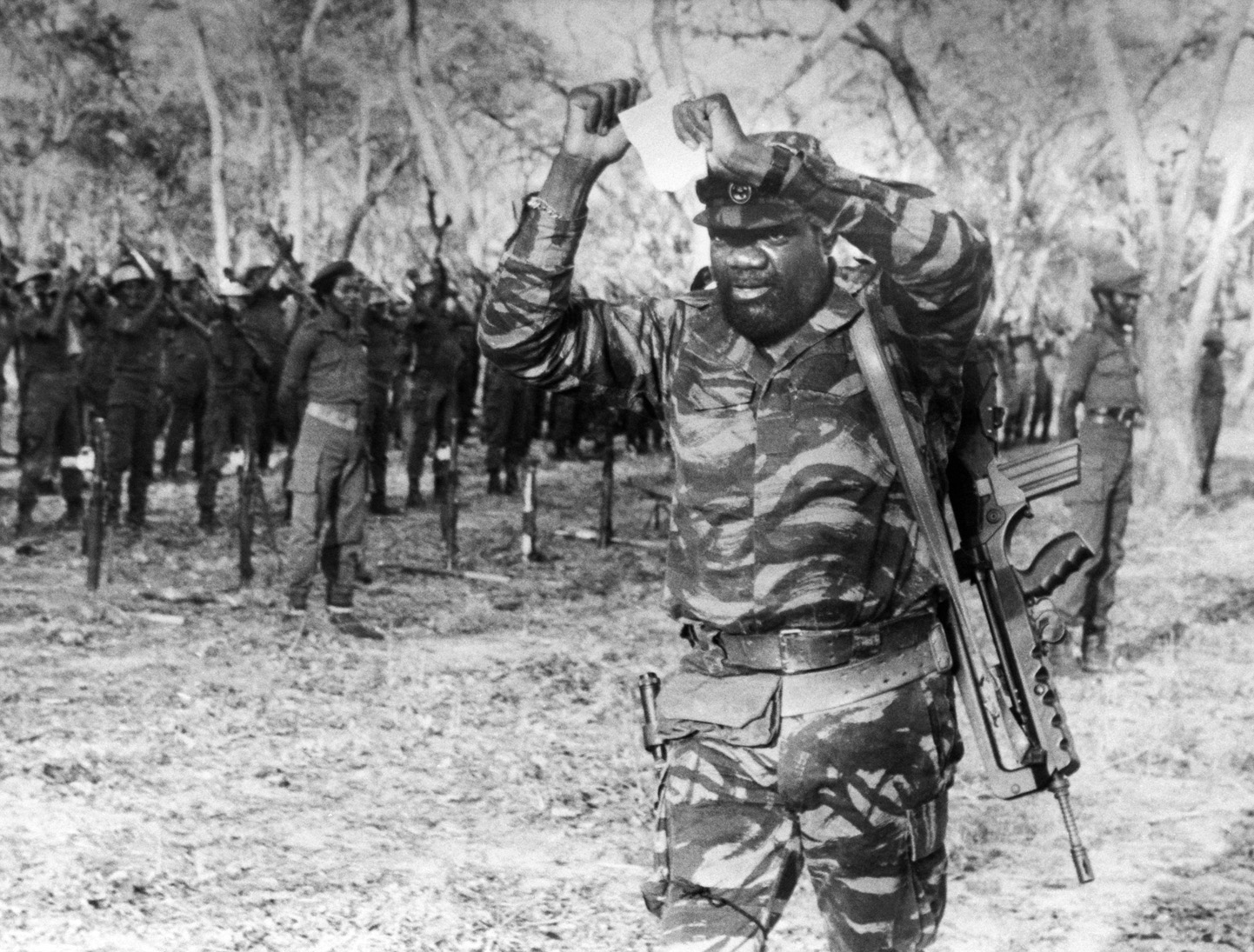
This move forced the South Africans’ hand. On September 5, Harris was demoted to operations officer and replaced by the more experienced Ferreira. The South Africans also would change their tactics. “By this time, Ferreira and other high-ranking SADF officers had realized that the only way to stop the FAPLA advance was to physically attack it,” wrote Sgt. Maj. Piet Nortje, a veteran of the battle.
For more than two weeks FAPLA 21 Brigade tried to cross the Lomba. Each FAPLA effort was executed half heartedly by commanders and met by massive South African artillery barrages and, where necessary, South African ground troops. For example, on September 9 a South African Ratel armored car engaged and destroyed three FAPLA T-55 tanks with the new ZT3 guided missile. In another engagement on the same day, South African forces intercepted two battalions of FAPLA 21 Brigade as they were attempting to ford the river. South African infantry and armored cars engaged at close range and killed more than 100 FAPLA troops before their commander pulled back.
These engagements were not always one sided. Four days later a Ratel got stuck in the mud and was taken out by T-55 fire, South Africa’s first casualties of the battle. Overall, though, the South Africans had the better of these engagements.
The Angolans should have been forcing a major engagement along the Lomba, but they were not. Soviet advisers had little confidence in Angolan officers and even less in the rank and file. “The Angolans hear gunfire and they run,” wrote Colonel Vuacheslav Mityev, an adviser at the battle. “They aren’t really brave soldiers. The Angolans were terrified of the South Africans … many Angolans just ran away as soon as the South Africans advanced.” FAPLA forces simply lacked the training and skill needed to quickly cross the Lomba and outflank the South Africans.
With the advance stalled, General Shagnovitch finally did the obvious and tried to turn the UNITA/SA flank. He sent FAPLA 47 Brigade west around the Lomba and established a
bridgehead. A rapid movement could have caused a real crisis for UNITA/SA forces, but once again the advance lacked speed, hampered by Angolan timidity and supply shortages. Ferreira decided to counterattack and dispatched 61 Mechanized Battalion to deal with the threat. The two formations first clashed on September 16. Though lightly armored, the South African Ratels were fast and mobile, and kept moving against the lumbering Angolan T-55s. Their 90 mm guns were more than adequate against enemy armor. The South African Ratels proved deadly in the bush, relying on shoot-and-scoot tactics to harry and confuse FAPLA armor and inflicting a further 200 casualties. However, the forward squadron of Ratels got stuck in FAPLA’s abandoned trenches and three were lost to enemy fire. Ferreira pulled 61 Mechanized Battalion back and waited.
Rather than advance, FAPLA 47 Brigade stayed put, so Ferreira counterattacked. First, Ferreira ordered up airstrikes. These came in the form of a flight of four Buccaneer ground attack aircraft alternated with flights of four Mirages. Shagnovitch finally ordered 47 Brigade to cross the Lomba and advance east to rendezvous with FAPLA 21 Brigade. On October 3, Ferreira sent 61 Mechanized Battalion forward against FAPLA 47 Brigade.
The South Africans attacked in three waves throughout the day, advancing, inflicting casualties, and then pulling back before 47 Brigade could react. By their third advance late in the day, the Angolans had had enough. “There was terrible panic and confusion all around,” wrote Zhadarkin. “The South Africans were shooting all over the place, not sparing ammunition. No one knew clearly whether to run or what to do.”
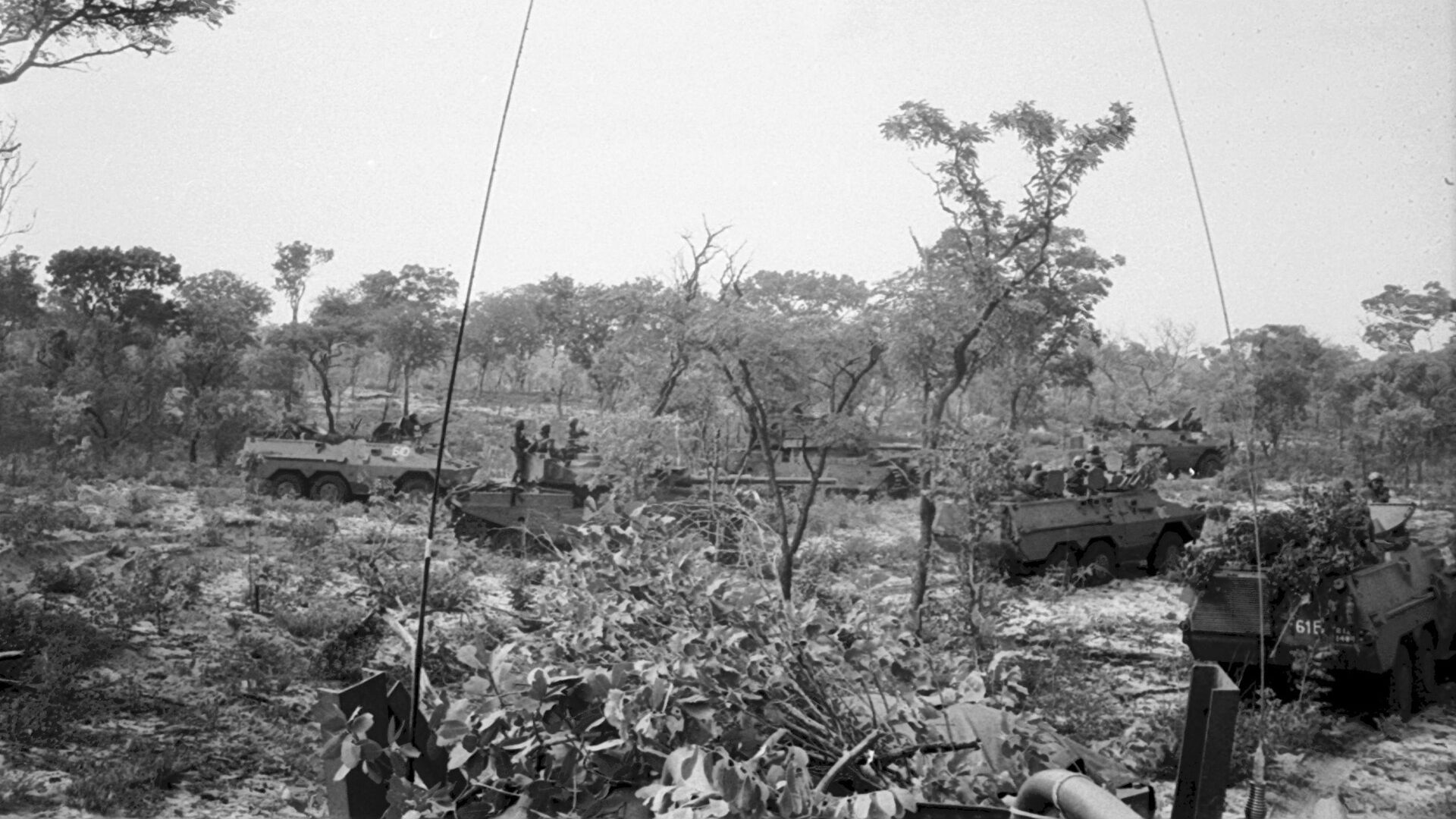
The South Africans routed 47 Brigade. After a day’s fighting FAPLA had lost 18 tanks and 20 armored personnel carriers, according to Zhadarkin. The South African victory was so resounding that it overran 47 Brigade’s rear echelon, capturing 11 artillery pieces of various calibers and two great prizes, an undamaged surface-to-air missile system and a P-19 radar installation. Six hundred Angolan soldiers were dead.
Surviving FAPLA troops simply ran back across the Lomba. Zhadarkin was not kind, blaming the defeat on poor logistics, in this case running out of ammunition as well as “the cowardliness of the officers; the absence of precise instructions to the troops engaged; and their terror of facing the South Africans.” The near destruction of 47 Brigade badly affected the moral of the other brigades, and Shagnovitch was forced to pull back from the Lomba, redeploying his forces on the north/south running Cuzimba River.
So far, the South Africans had accomplished everything they wanted. The FAPLA drive on Mavinga had been stopped, and UNITA had been saved—all with light South African casualties to date. Botha and the high command now had a decision to make. With FAPLA on the run was this now the time to pursue them and destroy their base of power at Cuito Cuanavale? Indeed, there was ample reason to declare victory. “We had already completed our mission…. We had to consolidate our gains and prevent the enemy from regrouping and resuming the offensive,” wrote Geldenhuys. Botha agreed, and so did Ferreira. Neither Castro nor the Soviet Politburo was happy with the results of Operation Saluting October. General Shagnovitch was relieved and recalled to the Soviet Union.
Geldenhuys decided to reinforce ad-hoc 20 Brigade, sending 4 South African Infantry Battalion, a battery of eight G-5 guns, a troop of three G-6 self-propelled guns, and most important, a squadron of 14 Oliphant tanks. The new, stronger 20 Brigade pursued FAPLA north fighting countless small-scale engagements and ruthlessly bombarding the retreating Angolans. As the Angolans retreated to the environs of Cuito Cuanavale, Ferreira deployed in an arc along the high ground east of Cuito Cuanavale. Here 20 Brigade began a campaign of artillery harassment and small unit raids. Over the course of late October and early November, FAPLA lost a further 500 men, 33 tanks, and more than 100 other vehicles.
Before the retreat to Cuito Cuanavale had even begun, the Soviet government expressed interest in a ceasefire. However, Castro demanded the battle continue. Feeling his personal honor was at stake, he urged the Soviets to escalate the war.
The Soviets proved reluctant, but not Castro. The Cubans airlifted supplies and men to Cuito Cuanavale, including Cuban MiGs and elements of the elite 50th Division, which guarded Castro and the perimeter of the American base at Guantanamo Bay. The 50th Division elements were assembled north of Cuito Cuanavale, where they threatened the South African flank. The Cubans even went so far as to take over the defense of Cuito Cuanavale. Castro took personal responsibility for running the war in Angola and placed Sánchez in command.
Castro dispatched an advance team of 40 advisers to assess the situation there. They interviewed FAPLA commanders and reorganized the so far ineffective artillery. Three hundred Cuban regulars were deployed with FAPLA field brigades to stiffen Angolan troops and to report back to Sánchez about the front. Sánchez organized a Soviet-style defense in three concentric rings, the first about 12 miles east of the town and the last just outside the town on the Cuito River.
The battered FAPLA 59 and the fresh 66 Brigades were deployed just east of the Cuito River at a town called Tumpo, which lay along the main road to Cuito Cuanavale. Farther east, along the road and in the bush were, from north to south, 21 and 16th Brigades, and astride the road was the 25th Brigade. While their defenses were strong, the FAPLA brigades were still at a disadvantage. Morale was sapped, while actual combat strength was, in the case of some units, down to 45 percent.
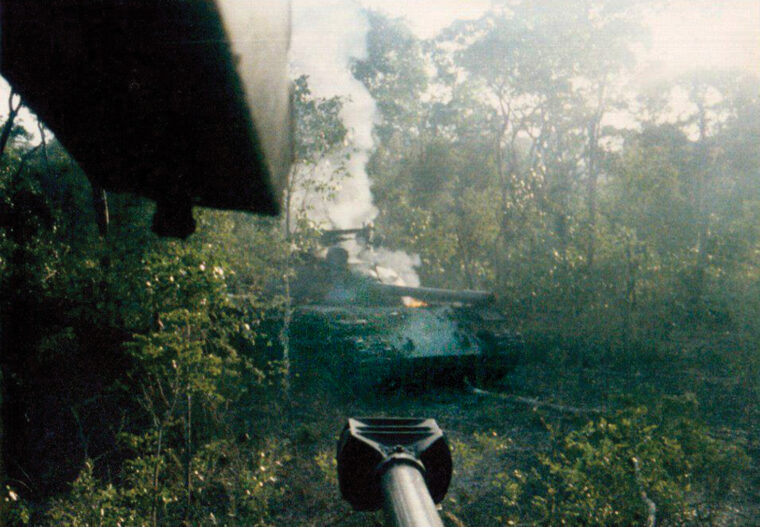
Ferreira and his commanders were under orders to accomplish two contradictory goals. First, ensure South African forces did not endure heavy casualties. Second, destroy FAPLA forces in the region and take Cuito Cuanavale. As a result, UNITA would repeatedly be called upon to consolidate and hold South African gains.
Ferreira deployed South African 20 Brigade east of the FAPLA defenses together with a pair of UNITA battalions. These manned the lines while South African forces stayed back, provided support if necessary, and most importantly bombarded Cuito Cuanavale. Over the next weeks the battle took the form of trench warfare similar to that of World War I. Zhadarkin describes daily South African bombardments. The South Africans had the better of these engagements. “The South African artillery and air force move with impunity at all times,” Zhadarkin wrote.
The South Africans alternated between firing short volleys into Cuito Cuanavale and undertaking sustained bombardments of the city. “Today, from morning till night, there was enemy artillery fire from all sides and in every direction,” wrote Zhadarkin on October 28. “The enemy hit the 59th Brigade with 148 shells,” he wrote the following day. “FAPLA counterbattery fire was completely ineffective. For every 10 or 15 shells the South Africans fired, FAPLA guns fired one. FAPLA reconnaissance units were simply unable to locate South African guns.” “UNITA is conducting patrician activities with guerrillas wandering all over the place, attacking and bombarding from all sides,” continued Zhadarkin. Of course, South African 32 Battalion lurked as well. FAPLA troops were simply terrified of the Buffalo Battalion, which Zhadarkin called a battalion of “mercenaries and bandits, known for its horrible brutalities throughout much of Angola.”
Indeed, South African artillery units were well situated to bombard FAPLA forces. The South Africans delegated a forward observer team to each of FAPLA’s three forward brigades. These were commanded by South African officers. When adequate targets were spotted, they called in devastating artillery strikes.
“One morning when it became light, there were at least 45 FAPLA in the river,” wrote Major R.D. Trautman, an artillery section commander, of a January incident. “Again, the G5s did their thing—at least 15 [to] 20 never drank water again.” In response, FAPLA sent a battalion of 250 men across the river to find the observation post. Trautman called fire down upon them, killing scores more. A few days later, a FAPLA battalion made a concerted push against a UNITA position. Too weak to defend, the UNITA troops pulled back. Trautman let FAPLA advance into UNITA’s abandoned positions, which his gunners had already expertly ranged, and then called down an artillery strike. FAPLA pulled back once more.
South African artillery also was employed effectively against FAPLA logistics. Numerous fires were brought against communist supply convoys. As they were highly mobile, these jobs often fell to the MLRS batteries. In one fire mission, a battery got off two ripples, each numberering192 rockets, against an incoming convoy of 22 vehicles. These were often shoot-and-scoot missions as FAPLA aircraft were roaming the skies in a desperate effort to locate and destroy the South African batteries.
South African gunners often played a dirty trick on their FAPLA counterparts, which they called “FAPLA Roulette.” When enemy aircraft appeared overhead, South African gunners would fire a white phosphorous shell into a FAPLA artillery battery. The resulting flash often tricked the Angolan pilots into attacking their own batteries.
The UNITA/SA cordon around Cuito Cuanavale was not static. Ferreira detached a powerful battle group built around a motorized rifle company from 101 Battalion and consisting of several artillery batteries of all calibers. Battle Group Bravo, as it was called, operated north of the UNITA/SA lines around Cuito Cuanavale and interdicted FAPLA supplies via ambush and artillery barrages. These efforts greatly hampered FAPLA’s supply situation. They also forced the Cubans to dedicate their recently arrived MiGs to combat escort duty.
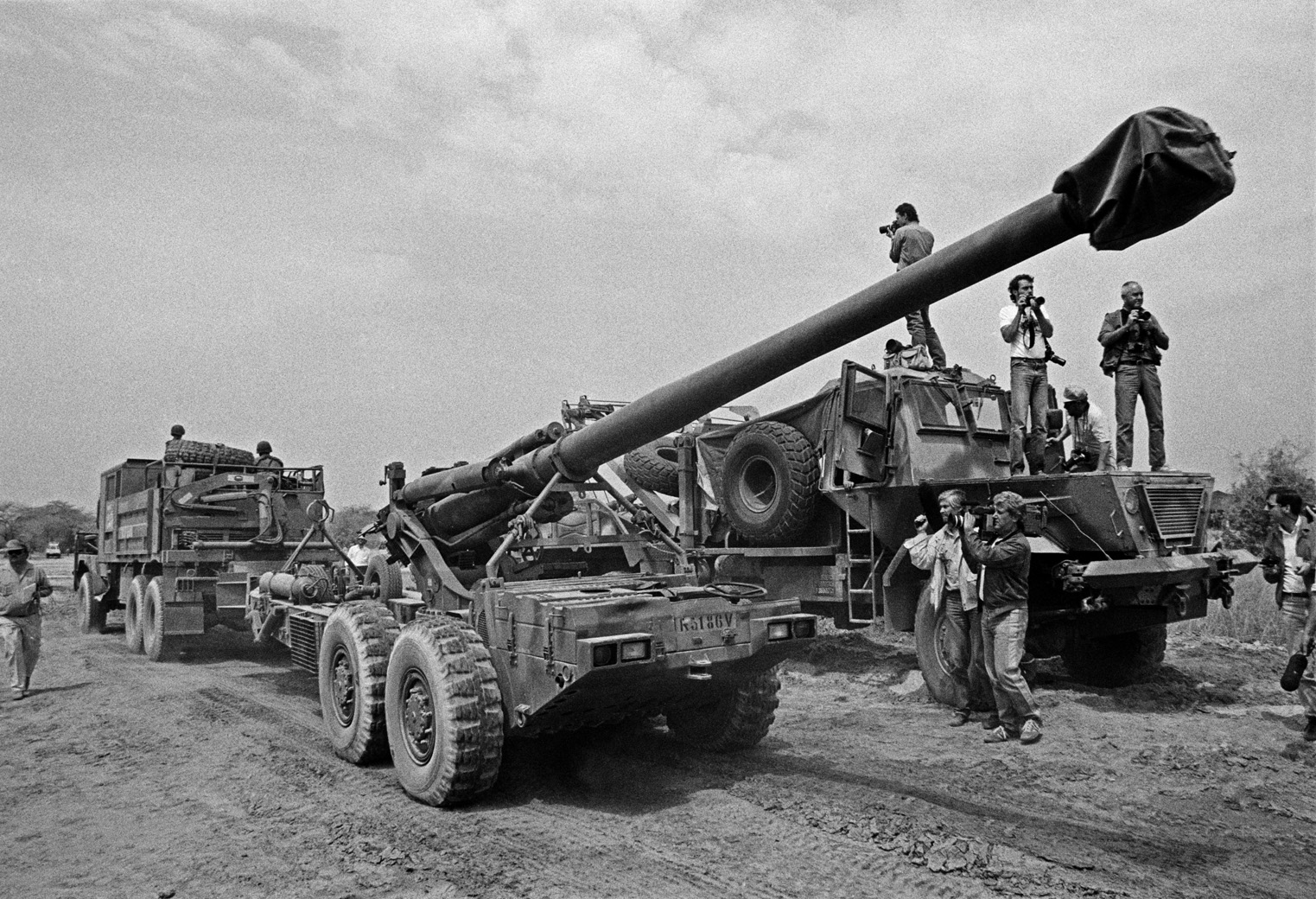
On January 14, Ferreira elected to launch an assault on FAPLA 21 Brigade protecting the main road on the northern end of the line. After a fierce artillery bombardment, South African forces advanced and pushed FAPLA 21 Brigade out of its forward positions, with 61 Mechanized
Battalion breaking into their headquarters and shooting the place to bits. A FAPLA armored force came south to help but was spotted by a battery of G-5 guns and bombarded, losing 14 tanks in the effort.
Throughout the battle, Cuban MiGs launched more than 30 air strikes on South African forces, and while they did little damage their presence slowed the advance and presented the specter of a lucky hit inflicting mass South African casualties. The position was turned over to UNITA. UNITA forces were excellent bush fighters but completely unsuited to holding static lines. Unfortunately for UNITA, FAPLA 8th Brigade had been moving south to relieve 21 Brigade. UNITA troops were hit hard on the flank and unable to hold. FAPLA quickly reoccupied the positions lost to the South Africans.
While the South Africans were still on the offensive, the advantage slowly shifted to FAPLA and the Cubans. While the retreat from the Lomba River had been humiliating, it brought the communists closer to their base of logistics and drew the South Africans farther from theirs. The withdrawal also bought time for Cuban reinforcements to arrive. The distance from South Arica also placed the strain of time and space on South African troops. South African soldiers were pushed to their limit, as was their equipment.
The intermittent trench warfare continued for four weeks as the South African contingent was devastated by an outbreak of hepatitis. Cuban MiGs began bombing UNITA and South African positions and even shot down a South African Mirage. Castro ordered Sánchez to withdraw most of his forces from the Tumpo triangle. The communist situation was improving. An attack by 4 South African Infantry Battalion against a FAPLA battalion was repulsed owing to the density of enemy minefields and the tenacity of Cuban pilots who added their fire to the potent artillery barrage against the stalled South Africans. It was the first serious defeat they had suffered since the beginning of the campaign.
The South Africans did not launch another main attack until February 14. This was the first of the tactical mistakes they made. Up to this point Ferreira and his officers had executed a near flawless campaign that played to South African strengths of mobility and precision. The attack on Tumpo was a blunt force operation to which the South African Army was not suited. While UNITA launched a diversionary attack on the weakened FAPLA 21 Brigade, 61 Mechanized Battalion led the South African attack to the south, just north of the main road to Cuito Cuanavale, against FAPLA 59 Brigade.
The South African Oliphant Tanks overran FAPLA 59 Brigade’s positions and drove on the headquarters, repelling an armored counterattack as they did so. A Cuban armored battalion was thrown into the fray and engaged in a point-blank fight with the South Africans, their T-55s suffering heavy losses against the more maneuverable Oliphants and Ratels. The Cubans pulled back, losing 14 tanks of the 32 deployed in that day’s battle. During the push on Tumpo, the South Africans suffered their heaviest casualties of the campaign, losing three Ratels and two Oliphant tanks, some of these ensnared in communist minefields, and worst of all 11 dead.
The battle of February 14 was a heavy loss to the South Africans since they had been ordered to avoid casualties. Ferreira continued the artillery harassment while he consolidated his forces. However, it was clear that the communist presence in Cuito Cuanavale was not going to be completely destroyed. By February 20, Geldenhuys reported that a tactical withdrawal was under way. This time concentrated FAPLA artillery fire stopped two concerted pushes by the South African 61st Mechanized and 32 Battalions. South African troops were exhausted and gradually replaced by reserve cadres based on the 82nd Citizen Force Brigade. These forces launched an attack on Tumpo whose real purpose was to cover the withdrawal of South African forces from Cuito Cuanavale. The final push happened without changing the situation and resulted in the loss of three Oliphants, according to Geldenhuys.
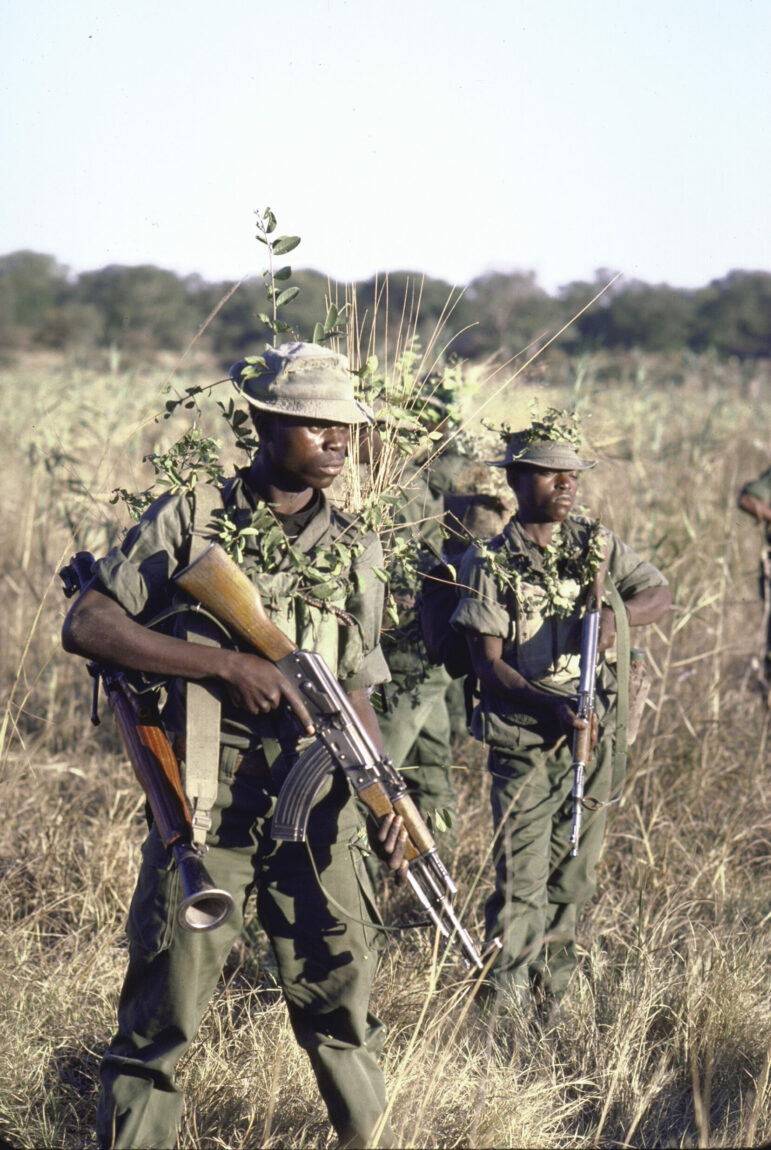
By this point the Cuban presence in and around Cuito Cuanavale was growing. Elements of the Cuban 50th Division were entering the fray, as were dozens of Cuban aircraft. A further serious push against the communists would entail a commitment of more South African forces that the government was simply unwilling to make. Besides, Ambassador Crocker’s negotiations were bearing fruit. By March, Cuban and South African diplomats were working out the details of a cease-fire agreement. The campaign for southeastern Angola was at an end.
The Cubans, Angolans, and even the ANC-led South African government claim the Cuito Cuanavale/Lomba River campaign was a great victory. After all, negotiations during and after the campaign led to an agreement in which the South Africans left Angola and abandoned South West Africa, now called Namibia.
These voices also point to the final actions around Cuito Cuanavale in which the South Africans suffered heavy losses of men and material, especially Oliphant tanks. The South Africans also lost five Ratels and three Casspir armored personnel carriers. In all, South Africa lost 38 men during the campaign, six of these to malaria. It is impossible to pinpoint exactly the extent of FAPLA’s casualties. Geldenhuys claims they lost nearly 5,000 dead and more than 500 vehicles, including 94 tanks. Geldenhuys also claims nine combat aircraft kills. UNITA casualties are not known but were no doubt heavy.
While the South Africans allowed themselves to become bogged down around Cuito Cuanavale, the simple fact is the campaign began with a FAPLA offensive into UNITA territory and ended with a UNITA/SA offensive against the main FAPLA base in southeastern Angola. FAPLA did not win any operational engagement.
Shagnovitch’s effort to force a crossing of the Lomba River was stopped cold by UNITA and South African forces, as was his later attempt to cross the Lomba downstream and turn the UNITA/SA flank. Shagnovitch then withdrew his forces to Cuito Cuanavale, where he was relieved. FAPLA 16 and 47 Brigades were badly beaten up at the Lomba River, while FAPLA 59 Brigade was nearly annihilated at Cuito Cuanavale.
Shagnovitch badly mishandled his forces, relying on brute force to cross the Lomba River when maneuver could have gained the south bank. Under Sánchez’s command, communist forces did prevent the South Africans from destroying their Cuito Cuanavale base. But they heavily outnumbered UNITA/SA forces and were confronting an enemy in the SADF that was not built for large-scale armored actions. A further handicap was the South African unwillingness to take heavy casualties. The South Africans were beatable simply by inflicting pain upon them.
Ferreira fought his South African forces brilliantly at the Lomba River, playing to his strengths of speed and agility uniquely fused with deadly artillery expertly deployed. His pursuit of communist forces north was well executed, inflicting casualties on the enemy while minimizing risk to his own troops. His handling of South African forces around Cuito Cuanavale was once again highly competent. Although the final attacks against FAPLA defenses were unwarranted, they were brought about by political pressure and are not Ferreira’s fault. That said, a far sounder plan would have been to reinforce 20 Artillery Regiment with at least another battery of G-5s and pound Cuito Cuanavale into dust.
When arguing over who actually won the campaign, the post-battle case of Sánchez is both interesting and telling. In the 1980s he had allegedly become involved in the international drug trade and was arrested by Cuban authorities. He also had been recorded expressing doubts about Cuba and communism. He was tried and executed in 1989. While Castro and Sánchez clashed repeatedly over the defense of Cuito Cuanavale, it is unlikely Castro would have executed a general he deemed to have won a victory.
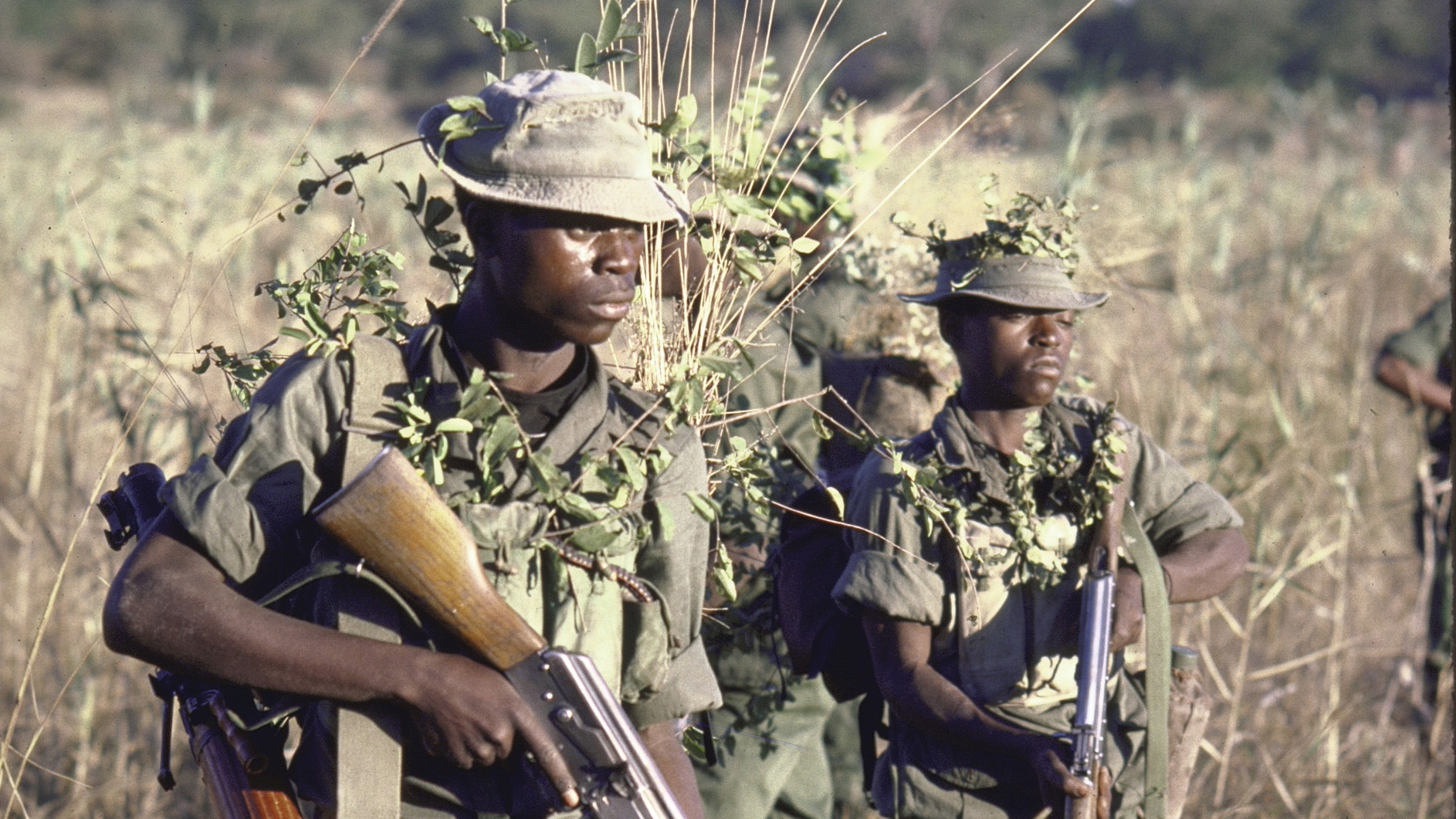
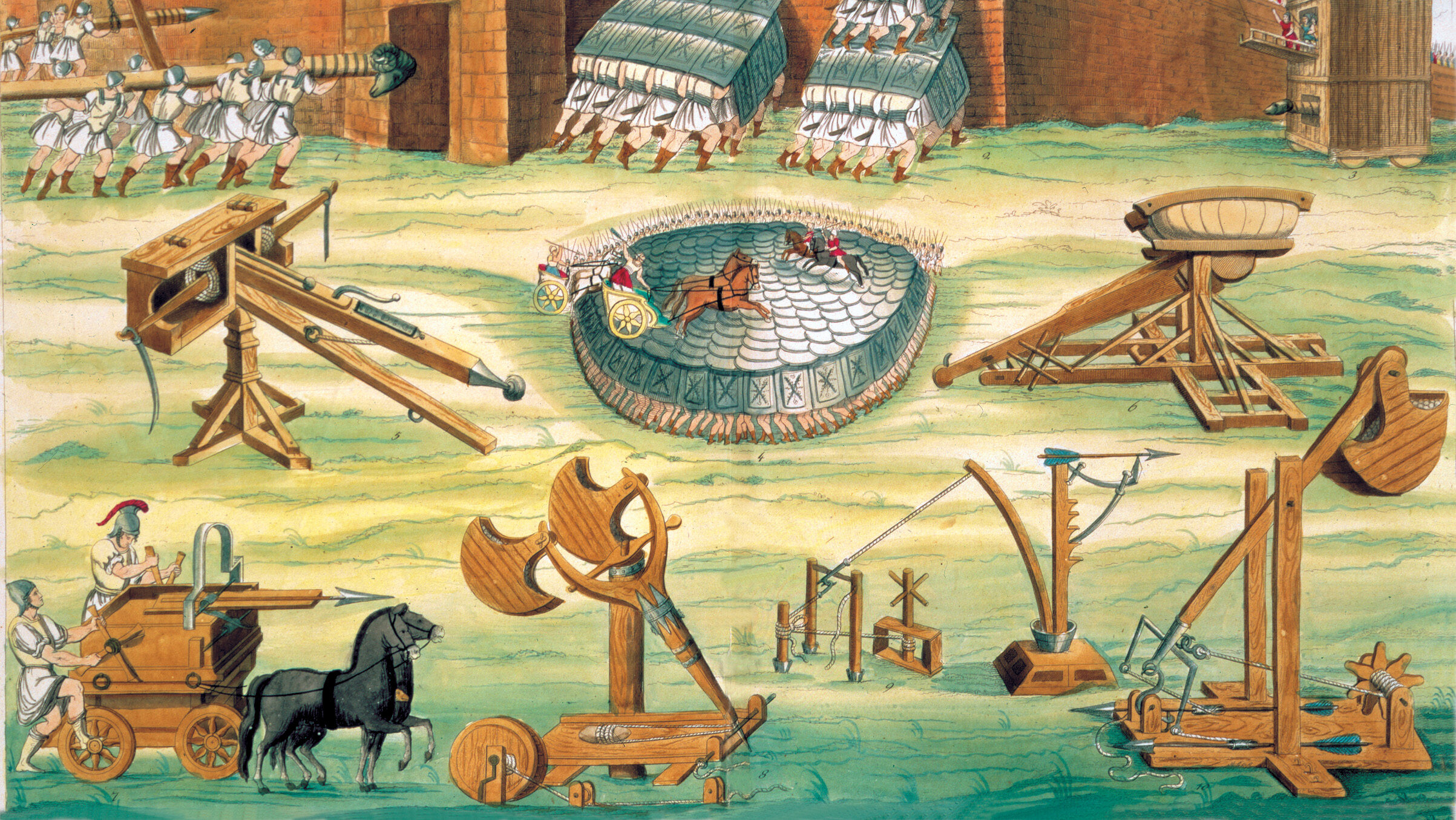
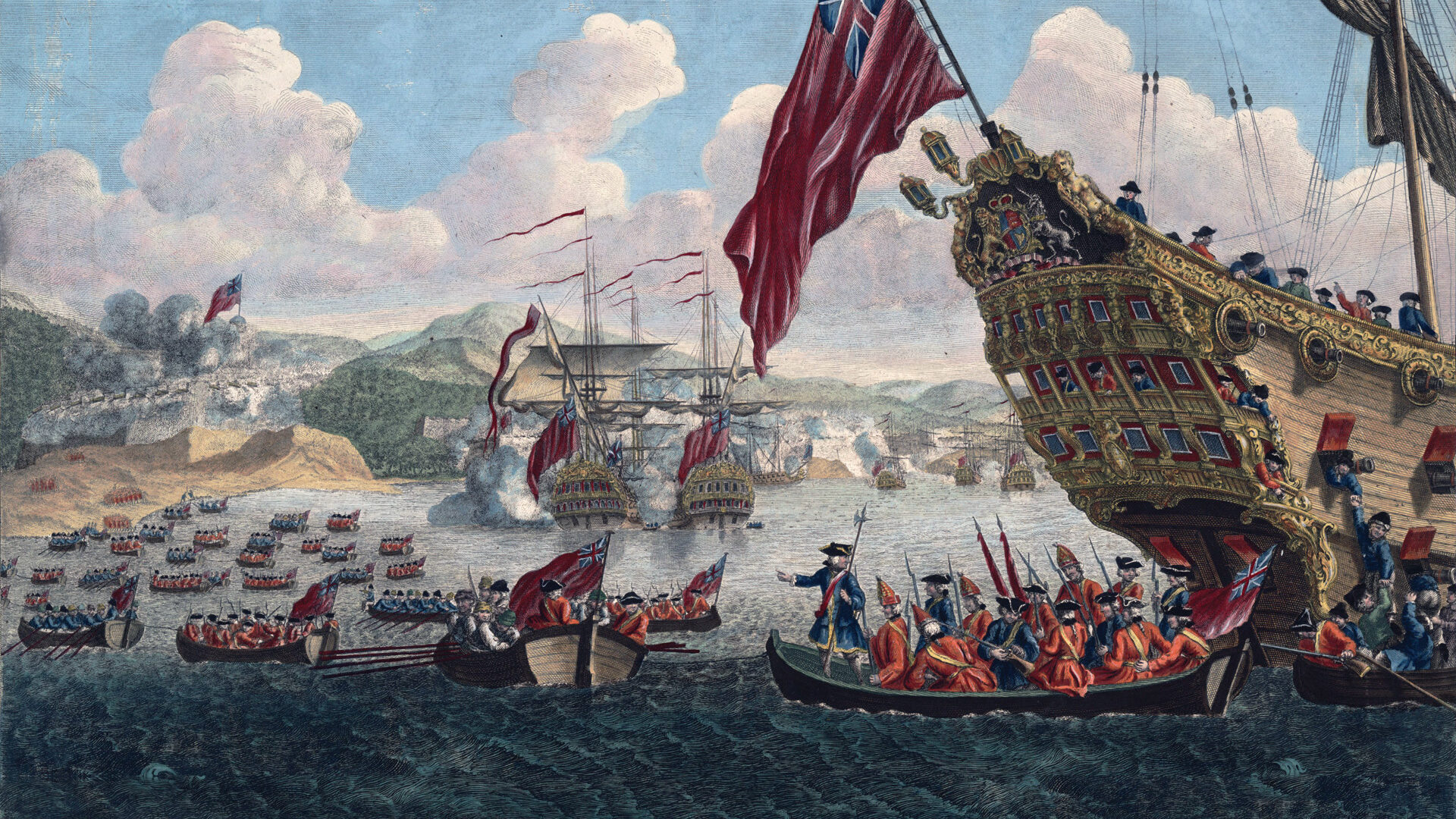
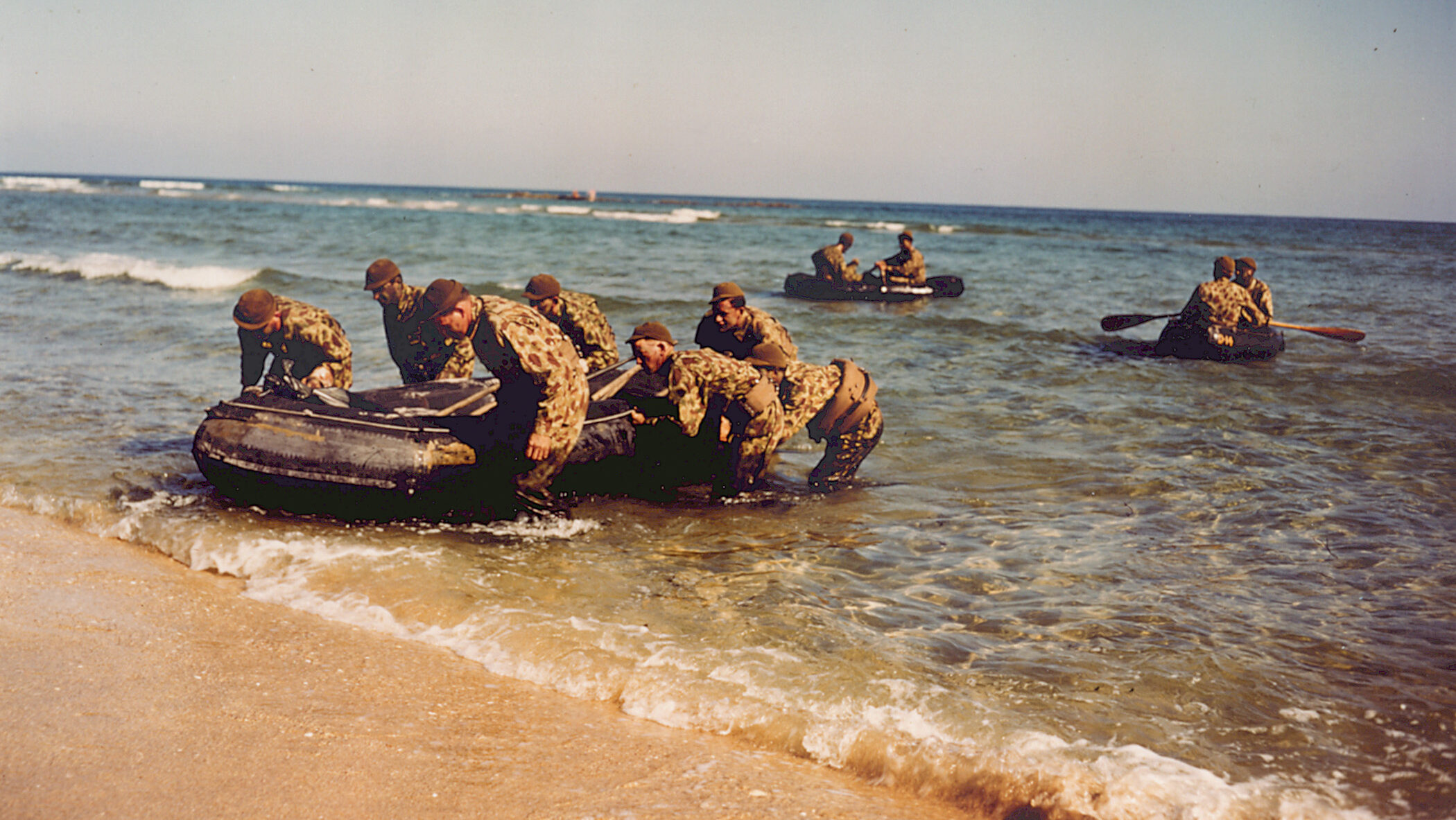
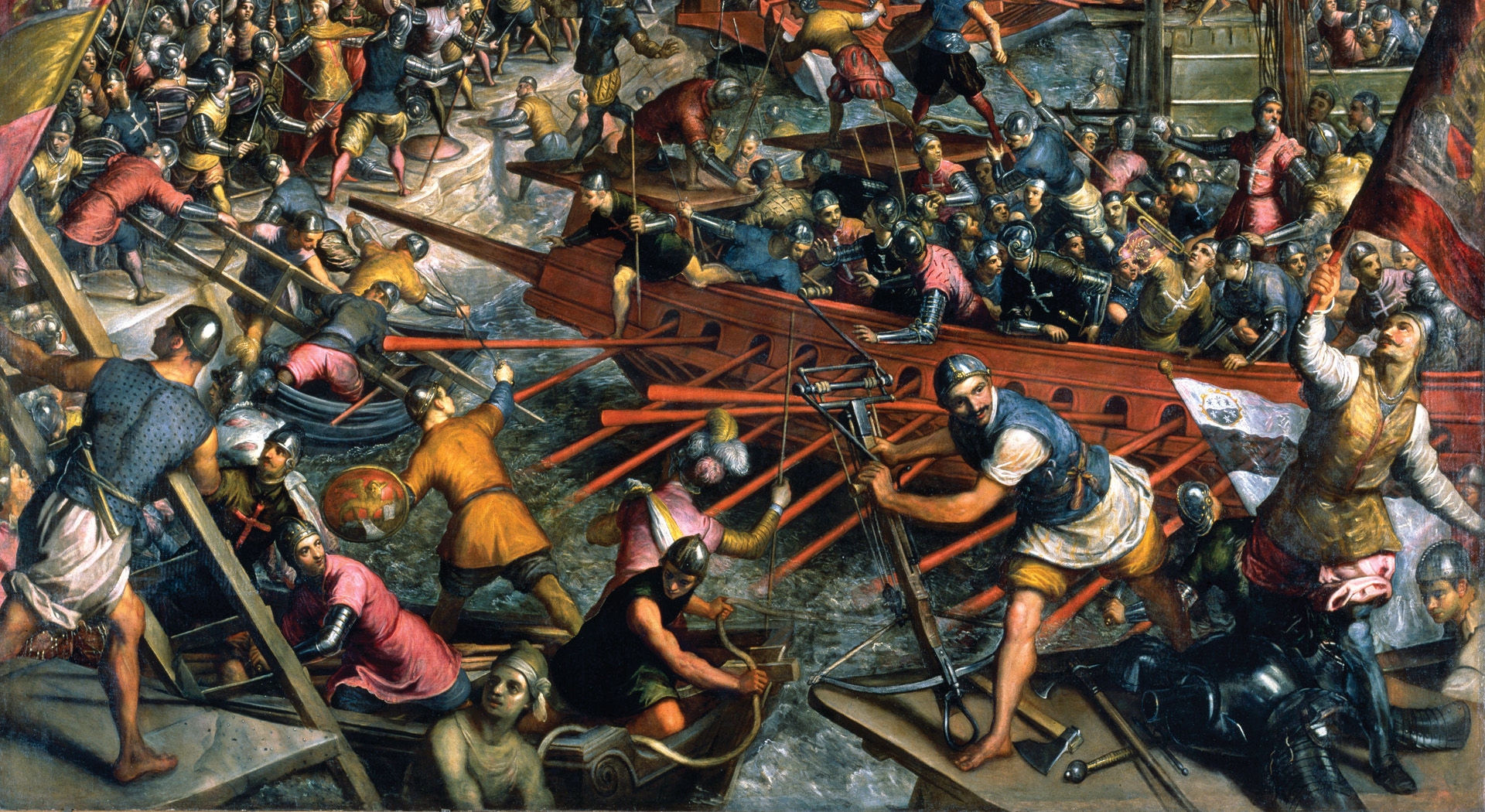
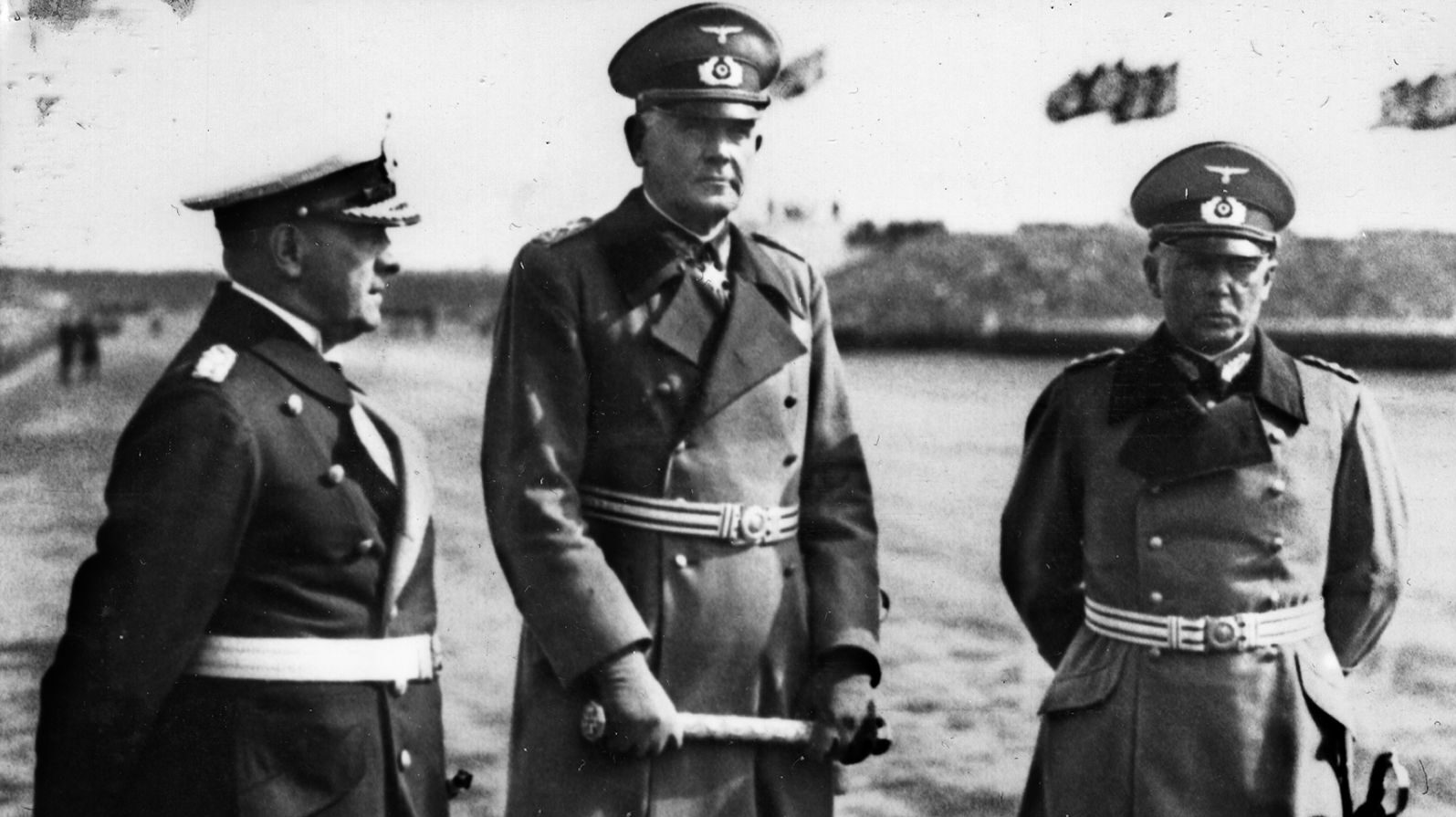
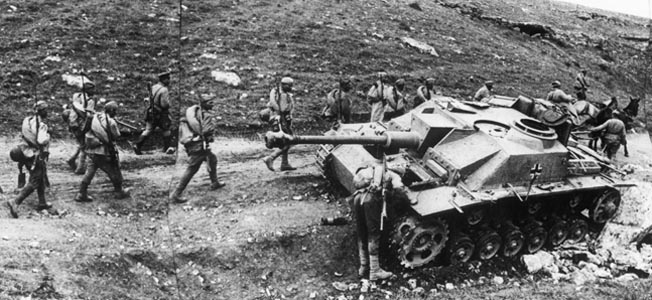
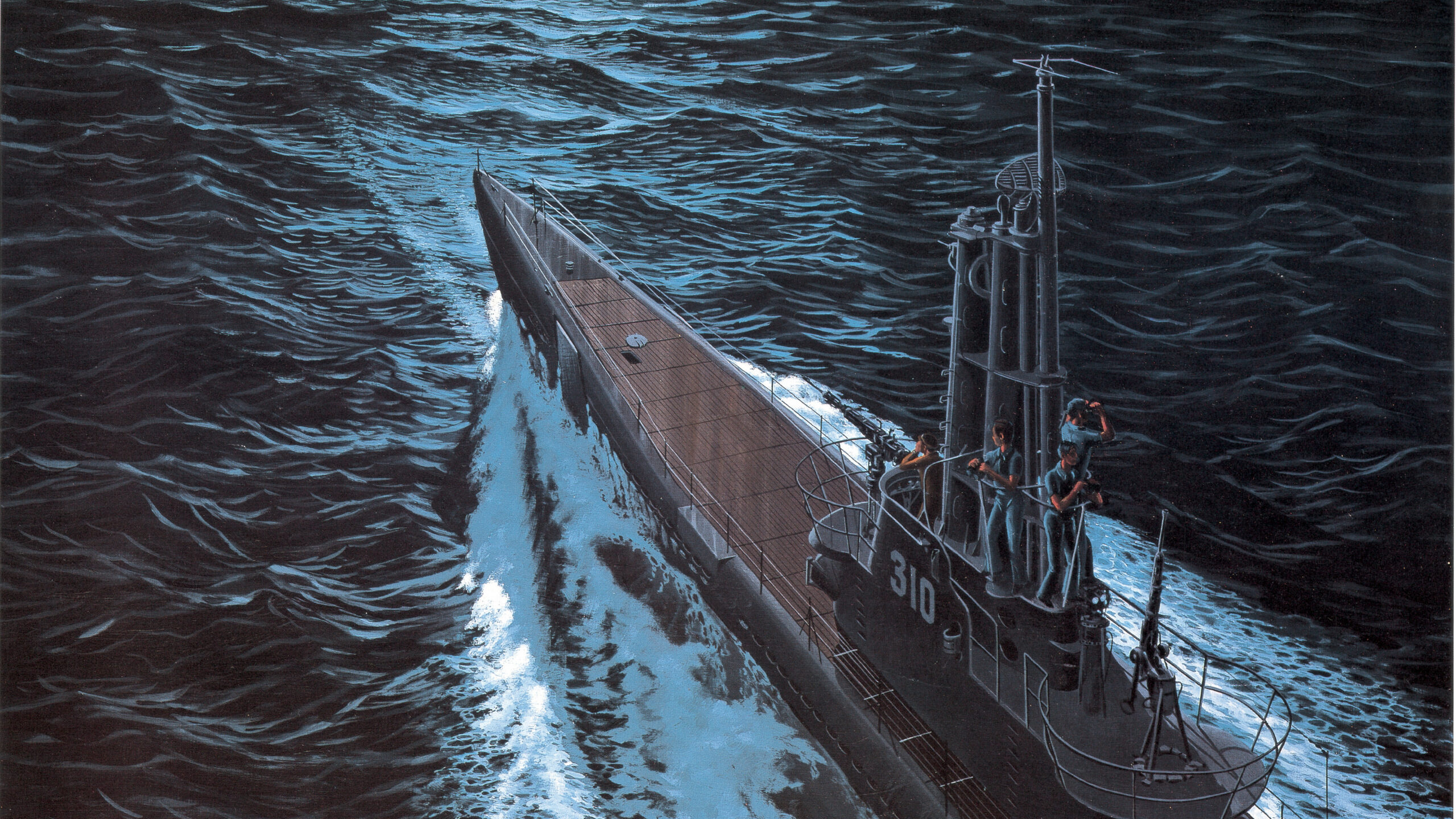
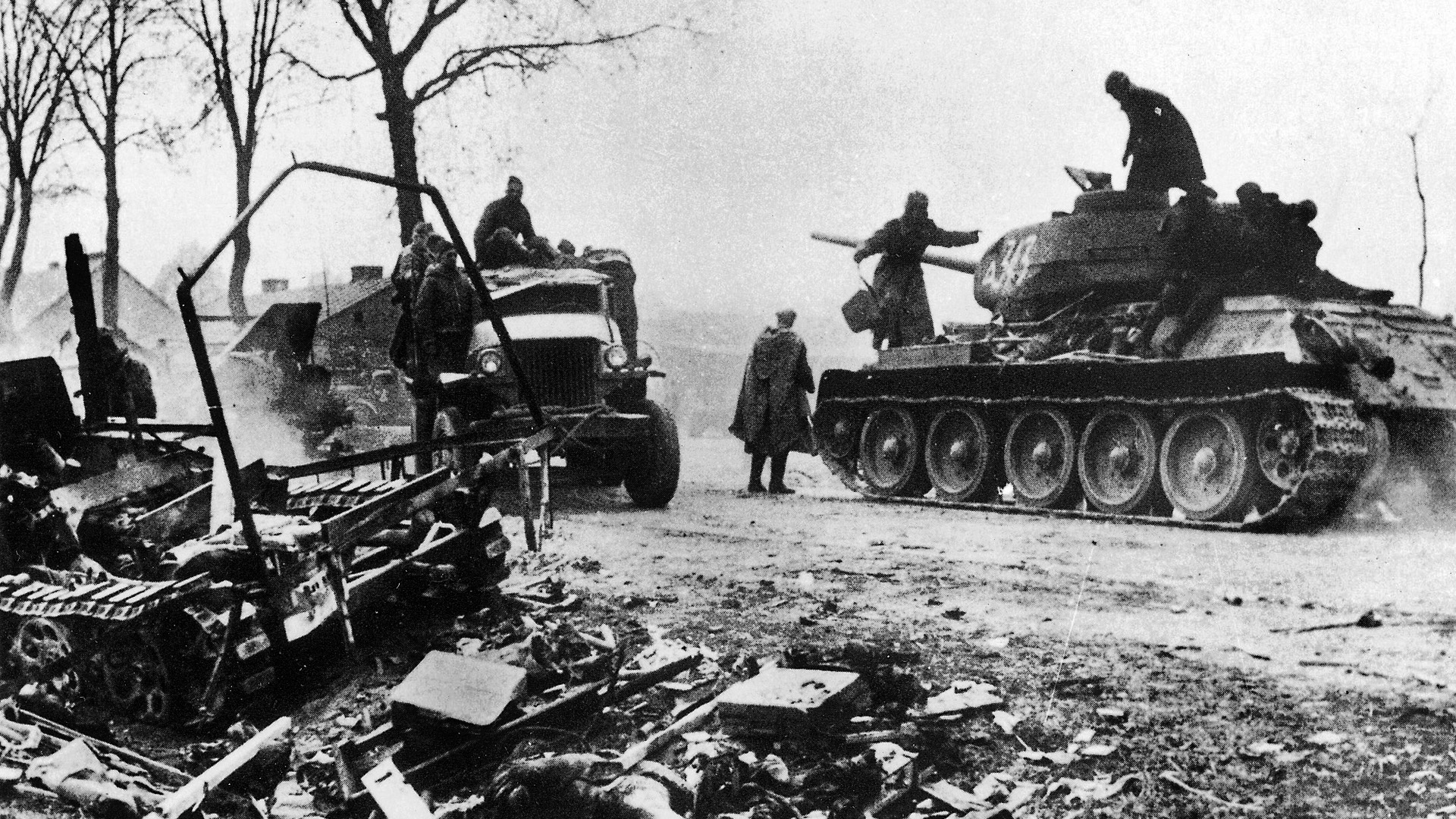
Join The Conversation
Comments
View All Comments